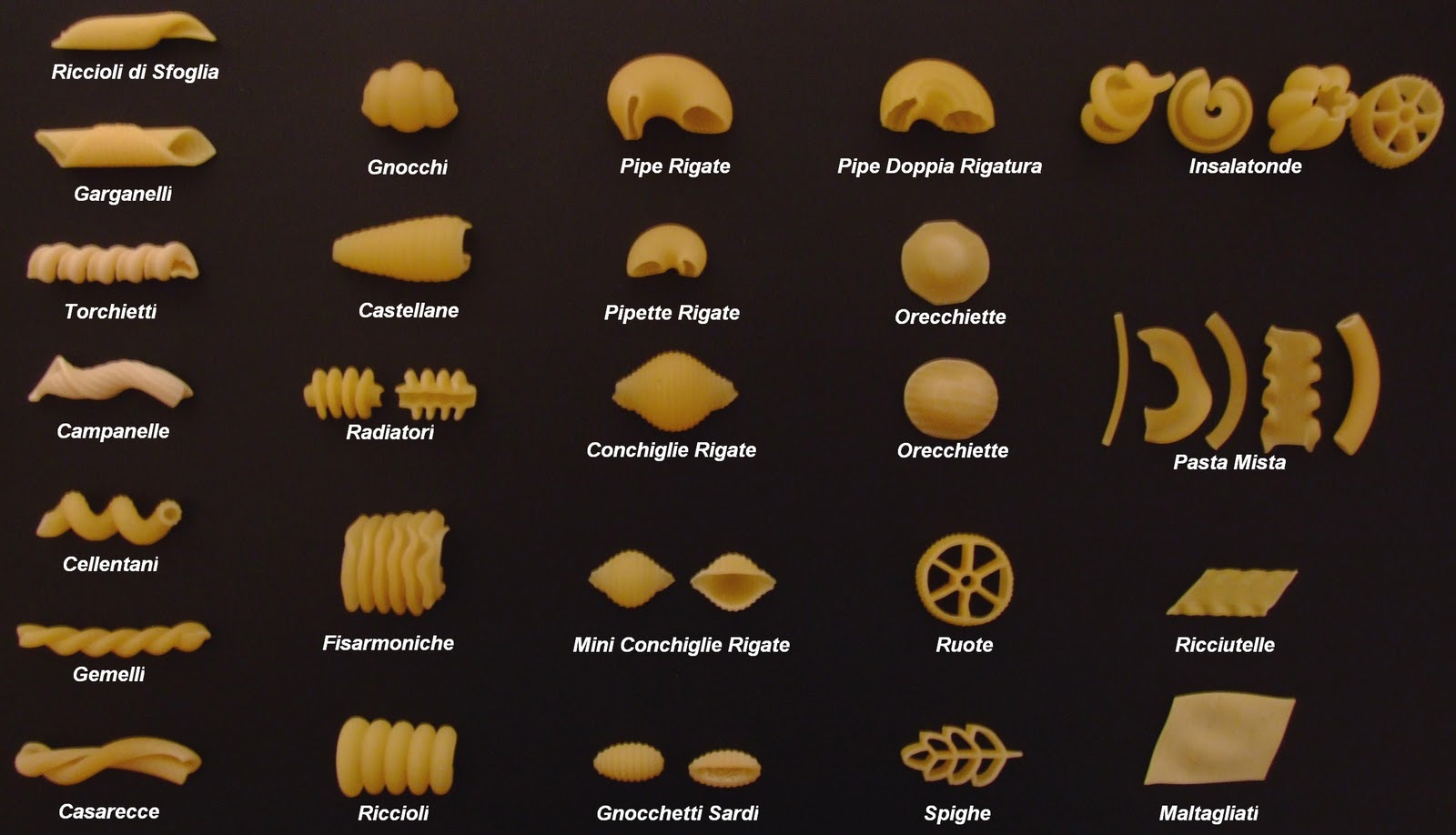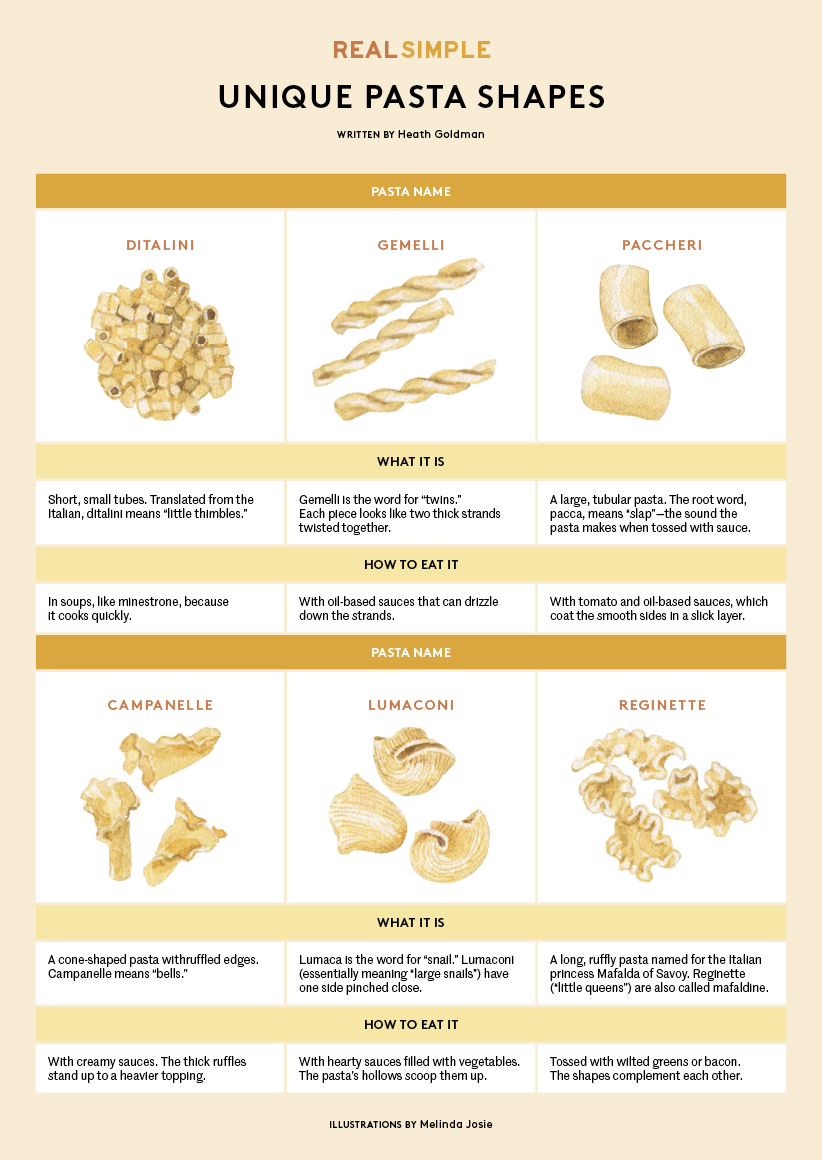


For each pasta making method, there have been a number of inventions to ease and mechanize the process. The various shapes can be categorized based on the means by which they are formed: by hand, rolled into sheets, or extruded. Then, of course, large pasta shells and pocket pastas, such as tortellini, serve a specific function, as a vessel for their cheese or meat-based filling.

Herbs, oil and cheese cling to the crevices of the short, thin, twisted noodle. And what’s the perfect pasta pairing for homemade pesto? Trofie. Rigatoni are short tubes of pasta with a ridged exterior-a shape great for chunky sauces that can fall into the ridges and the center of the tubes. They pair with an array of sauces: thicker sauces such as bolognese for tagliatelle, or flat ribbons of pasta and lighter sauces such as lemon butter herb with farfalline, a small, rounded version of the traditional bowtie pasta. For example, cavatelli, meaning “little hollows” in Italian-and looking like little hot dog buns-goes by 28 different names depending on the region and town where you’re eating it.ĭifferent shapes of pastas serve different purposes. Of course, like nonna’s dearest grandchild, there are multiple names for each shape. The Italians invented over 1,300 shapes of pasta, according to food scholar Oretta Zanini De Vita’s Encyclopedia of Pasta. What shape do you think of when you hear the word pasta? Macaroni.


 0 kommentar(er)
0 kommentar(er)
